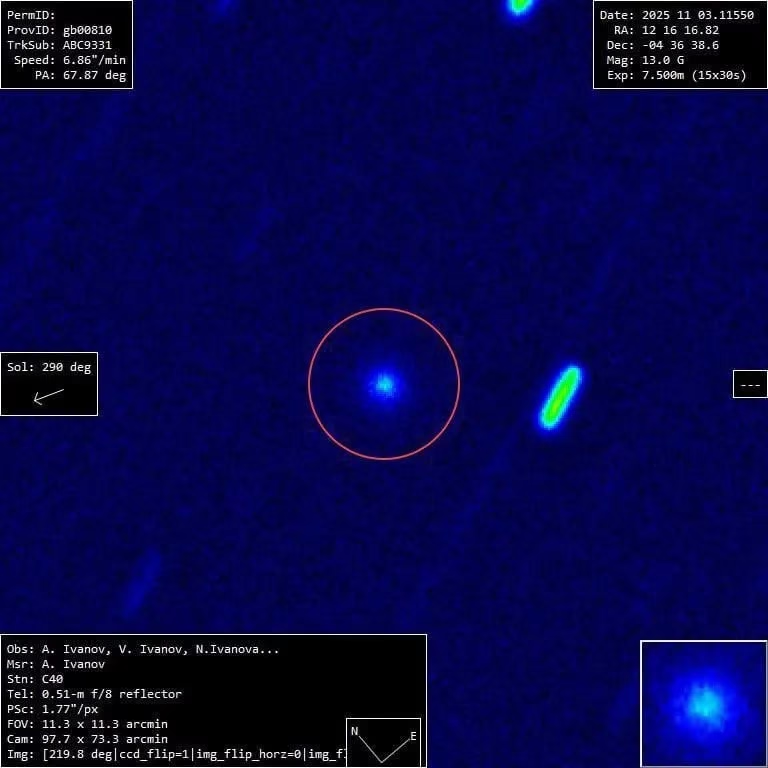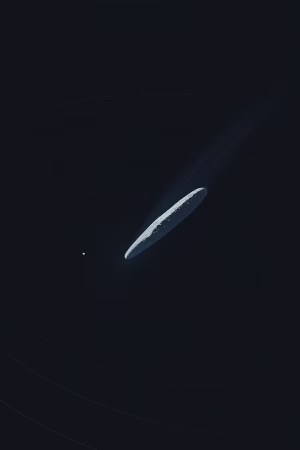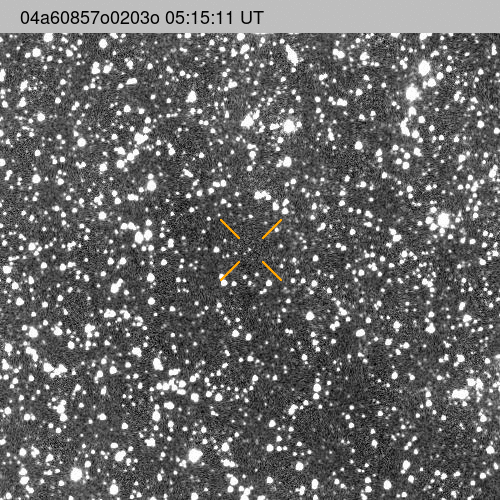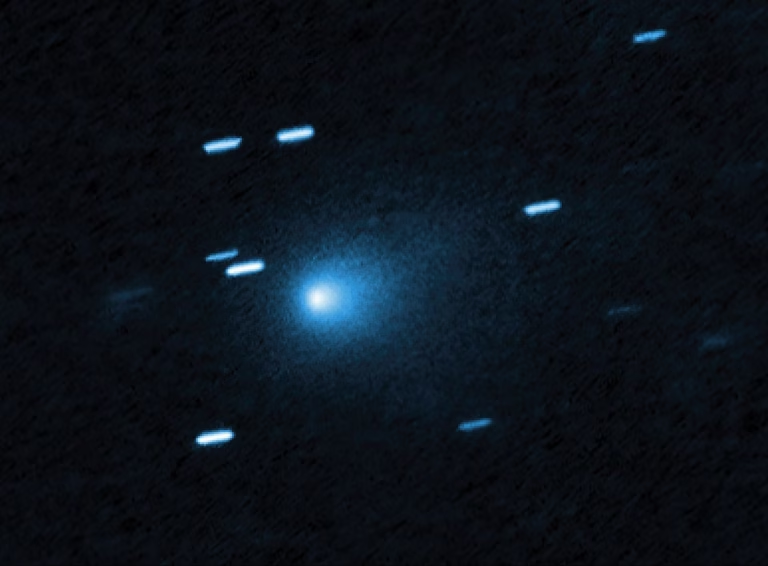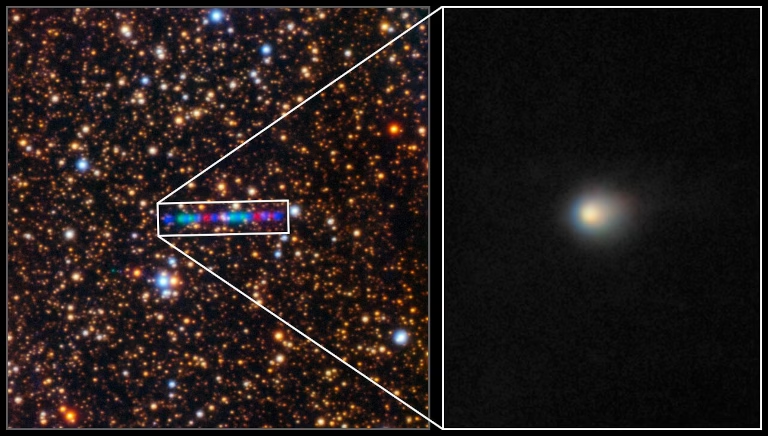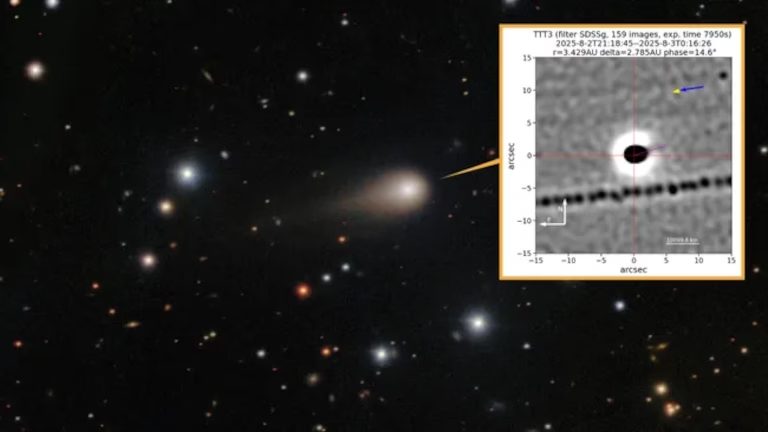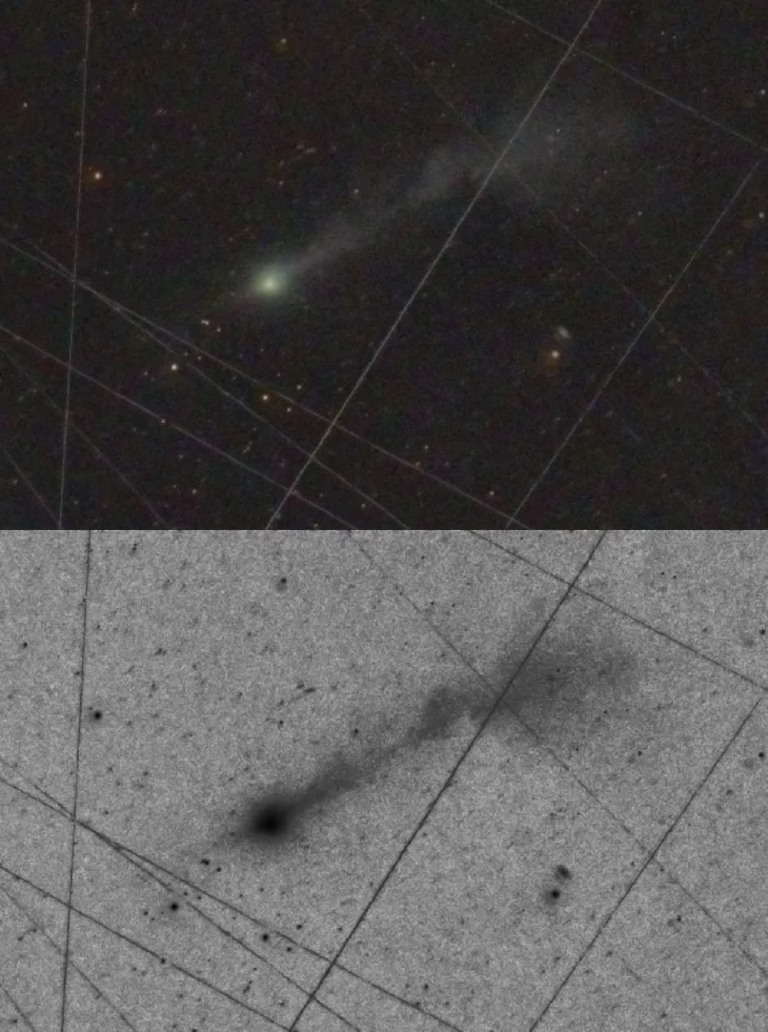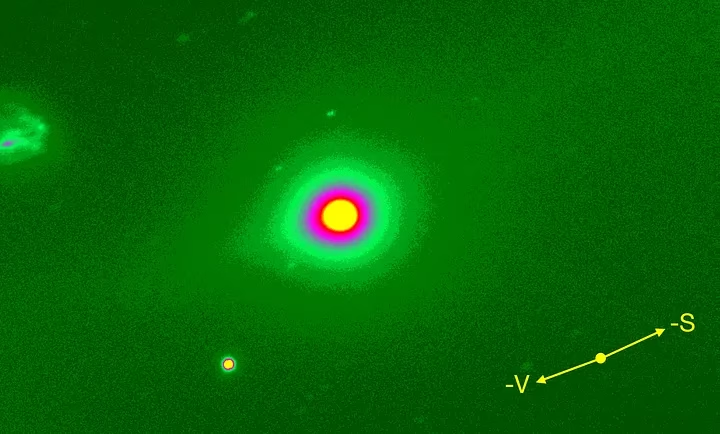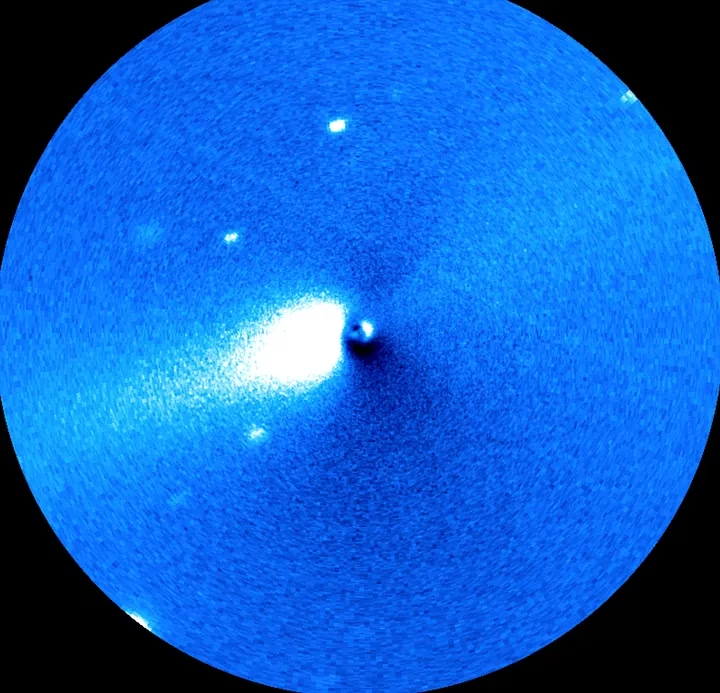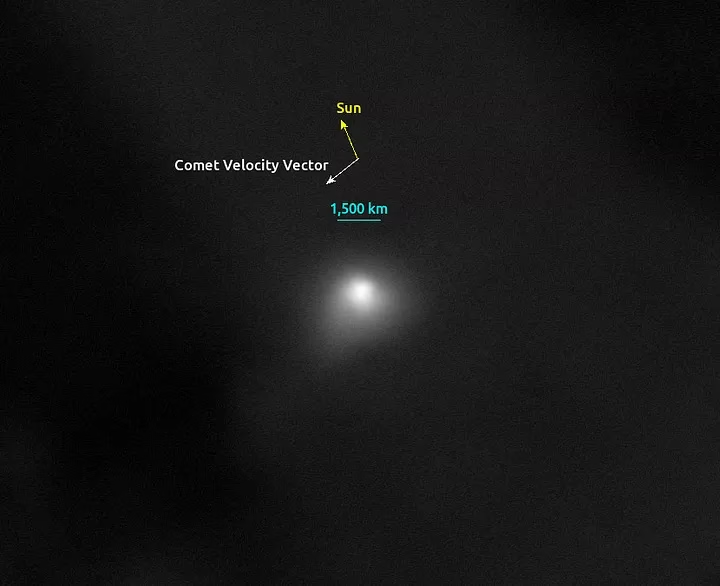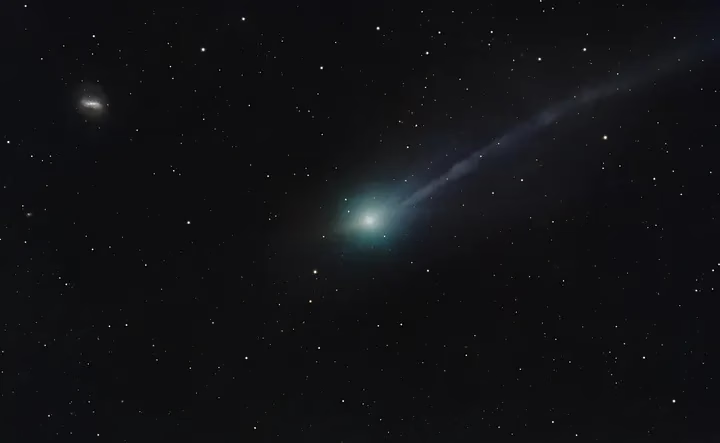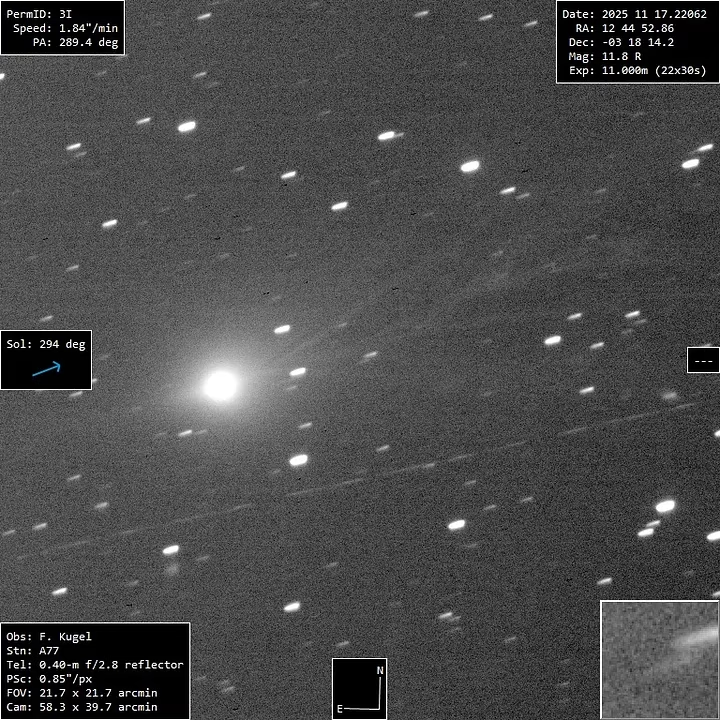Contents
3I/ATLAS Name Definition
— 3 → It’s the third known interstellar object detected passing through our Solar System.
— I → Stands for Interstellar, meaning it’s not gravitationally bound to the Sun.
— ATLAS → Comes from the Asteroid Terrestrial-impact Last Alert System, the Hawaiian sky-survey project that discovered it.
Comet terminology missatribution
The term: “Comet“.
This astral object is wrongly attributed as “comet” by astronomers and it supports the the Loeb anomaly identified as “non-tail”. I will give you an insight that even wikipedia doesn’t mention in the comet definition: https://en.wikipedia.org/wiki/Coma_(comet)
Comet in Greek means “Kometes” an object that has long hair, thus not a tail, and it looked like that to people looking at it with naked eyes and without telescopes, like an astral body with long hair.
From that term now derives the wrong term “coma”. Long hair in Greek is “κώμη” transliterated correctly to English as “come” or “kome”, as a noun and not the verb “come”.
“Coma” is an unnatural Greek term if we want to sound literate. I understand the exact transliteration “come” with a “c” can be mistaken for the verb “come”, but the term “coma” also can be mistaken for the medical state of “coma’” thus making it a disambiguation. In all cases I’d suggest the better term “kome” that yields the exact meaning of the Greek long hair, and “Comet” as “Kometes”, literally “the object in the sky with long hair”.
3I/ATLAS Introduction
3I/ATLAS is a remarkable interstellar object that first drew attention when it passed through our solar system. Unlike typical comets or asteroids, it displays a range of unusual features that have intrigued astronomers. Dr. Avi Loeb claims that this object is very large for being an asteroid, that its path and the plane of its orbit are not in the usual alignment, and that its physical properties, such as the forward jet, the blue color at perihelion, the non-gravitational acceleration, and the lack of cometary or dust tail near perihelion are all different from what has been seen before or are at least very unusual. Undoubtedly, the precise characteristics remain vague, but the research of Loeb renders 3I/ATLAS to be an exceptional case of an interstellar object with deep and enigmatic changes.
3I/ATLAS Anomalies
| # | Anomaly | Quote from Loeb | Source |
|---|---|---|---|
| 1 | Huge inferred size/mass | “The inferred size of 3I/ATLAS is unusually large for an interstellar object — perhaps several kilometres across.” | Loeb (Medium – Anomalies Recap) |
| 2 | Forward jet / anti-tail pointing toward Sun | “It shows a long jet or plume pointing sunward rather than the usual anti-sunward tail of a comet.” | Loeb (Medium – Anomalies Recap) |
| 3 | Unusual composition (CO/CO₂ rich, H₂O poor; Ni/Fe anomalies) | “Spectroscopy found a coma dominated by CO/CO₂, negligible water; and nickel appears higher than expected compared to iron.” | Loeb (Medium – Anomalies Recap) |
| 4 | Extreme negative polarization of scattered light | “Its scattered-light polarization is outside the normal range for known comets or asteroids.” | Loeb (Medium – Anomalies Recap) |
| 5 | Orbit near ecliptic (low inclination) | “Its orbital plane lies within a few degrees of the ecliptic — an improbable alignment if it were a random interstellar visitor.” | Loeb & de Simone (2025 Paper) |
| 6 | Arrival timing/trajectory near Mars/Venus/Jupiter | “The timing and path of its trajectory allowed close approaches to Mars, Venus and Jupiter — an unexpectedly efficient route.” | Loeb & de Simone (2025 Paper) |
| 7 | Alignment with the 1977 ‘Wow!’ signal | “Its incoming direction is within a few degrees of the ‘Wow!’ signal’s origin — a curious coincidence.” | Loeb (Medium – Anomalies Recap) |
| 8 | Detection difficulty / late discovery | “It approached from a direction and at a brightness evolution that made early detection unusually difficult.” | Loeb (Medium – Q&A) |
| 9 | Blue colour / sudden brightening at perihelion | “At perihelion it appeared bluer than the Sun and exhibited a sudden brightening behaviour unlike typical comets.” | Loeb (Medium – Brightening & Blue) |
| 10 | Non-gravitational acceleration at perihelion | “We report first evidence for a measurable non-gravitational acceleration in its motion at perihelion.” | Loeb (Medium – Non-Gravitational Acceleration) |
| 11 | No cometary dust tail near perihelion | “The new image taken on November 5, 2025 by the Lowell Discovery Telescope in Arizona does not show evidence for a dust tail pointing away from the Sun, as expected from massive evaporation of a natural comet near perihelion.” | Loeb (Medium – The Latest Image of 3I/ATLAS) |
| 12 | Complex Jet Structure after perihelion | “The latest images of 3I/ATLAS show a complex structure of at least 7 jets” | Loeb (Medium — A Complex Jet Structure Emanates from 3I/ATLAS After Perihelion) |
| 13 | Relative to Anomaly #1: Inferred mass loss after perihelion at least 16 times larger than the upper limit of the July 21, Hubble Image | “The required surface area of 3I/ATLAS to provide the inferred mass loss from the latest post-perihelion image, is at least 16 times larger than the upper limit from its Hubble image on July 21, 2025.” | Loeb (Medium — Did 3I/ATLAS Just Break-Up Near the Sun?) |
| 14 | Single Body with a Sunward Anti-Tail After Perihelion | “Given the large-scale jets reported recently, the fact that 3I/ATLAS remains a single body is surprising for a natural comet.” | Loeb (Medium — 3I/ATLAS is Still a Single Body with a Sunward Anti-Tail After Perihelion!) |
| 15 | Orientation of the Jets is Not Smeared by Rotation | “How could these jets maintain their orientation if 3I/ATLAS is rotating every 16.16 hours?” | Loeb (Medium — Orientation of the Jets is Not Smeared by Rotation) |
| 16 | Small Correction of Course | “The non-gravitational acceleration introduced a small course correction of exactly the magnitude needed to bring the minimum distance of 3I/ATLAS from Jupiter to the value of Jupiter’s Hill radius.” | Loeb (Medium — An Extraordinary New Anomaly of 3I/ATLAS) |
3I/ATLAS Images
Newly discovered, possibly Interstellar Object, C/2025 V1 (Borisov)
On the morning of November 2, 2025, the astronomer Gennady Borisov — discoverer of the interstellar comet 2I/Borisov in 2019, identified a new “nearly interstellar” object which is officially labeled as C/2025 V1 (Borisov). The orbit of C/2025 V1 is nearly perpendicular to the orbit of 3I/ATLAS. Similarly to 3I/ATLAS, C/2025 V1 does not display a clear cometary tail.
